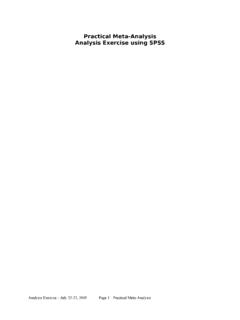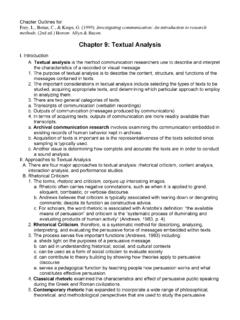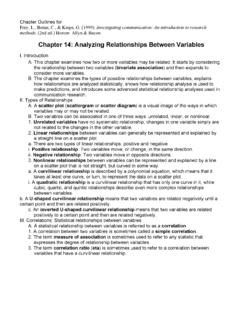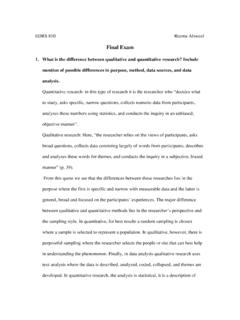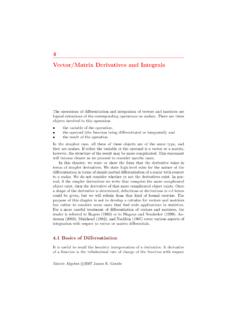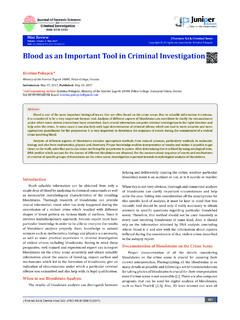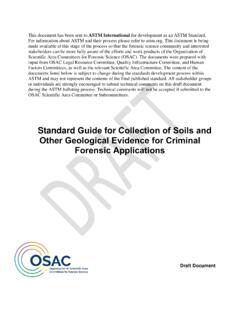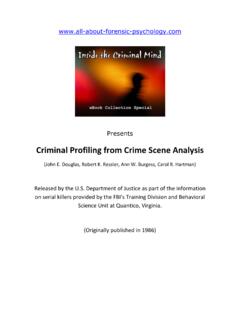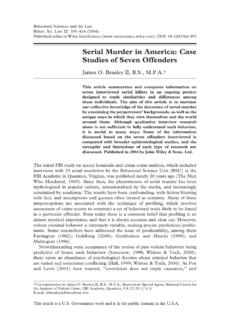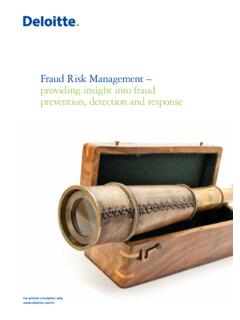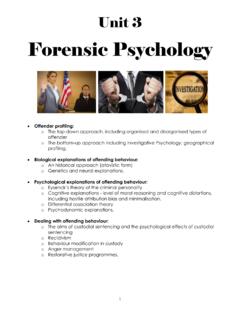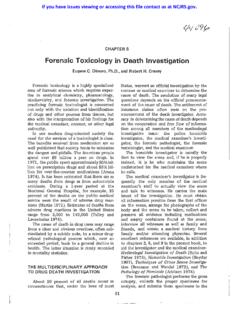Transcription of Chapter 9: Textual Analysis - Information Technology Services
1 Chapter Outlines for: Frey, L., Botan, C., & Kreps, G. (1999). Investigating communication: An introduction to research methods. (2nd ed.) Boston: Allyn & Bacon. Chapter 9: Textual Analysis I. Introduction A. Textual Analysis is the method communication researchers use to describe and interpret the characteristics of a recorded or visual message. 1. The purpose of Textual Analysis is to describe the content, structure, and functions of the messages contained in texts. 2. The important considerations in Textual Analysis include selecting the types of texts to be studied, acquiring appropriate texts, and determining which particular approach to employ in analyzing them.
2 3. There are two general categories of texts: a. Transcripts of communication (verbatim recordings) b. Outputs of communication (messages produced by communicators) 4. In terms of acquiring texts, outputs of communication are more readily available than transcripts. a. Archival communication research involves examining the communication embedded in existing records of human behavior kept in archives. b. Acquisition of texts is important as is the representativeness of the texts selected since sampling is typically used. c. Another issue is determining how complete and accurate the texts are in order to conduct a sound Analysis . II. Approaches to Textual Analysis A.
3 There are four major approaches to Textual Analysis : rhetorical criticism, content Analysis , interaction Analysis , and performance studies. B. Rhetorical Criticism 1. The terms, rhetoric and criticism, conjure up interesting images. a. Rhetoric often carries negative connotations, such as when it is applied to grand, eloquent, bombastic, or verbose discourse. b. Andrews believes that criticism is typically associated with tearing down or denigrating comments; despite its function as constructive advice. c. For scholars, the word rhetoric is associated with Aristotle s definition: the available means of persuasion and criticism is the systematic process of illuminating and evaluating products of human activity (Andrews, 1983, p.)
4 4). 2. Rhetorical Criticism, therefore, is a systematic method for describing, analyzing, interpreting, and evaluating the persuasive force of messages embedded within texts. 3. The process serves five important functions (Andrews, 1983) including: a. sheds light on the purposes of a persuasive message b. can aid in understanding historical, social, and cultural contexts c. can be used as a form of social criticism to evaluate society d. can contribute to theory building by showing how theories apply to persuasive discourse e. serves a pedagogical function by teaching people how persuasion works and what constitutes effective persuasion. 4. Classical rhetoric examined the characteristics and effect of persuasive public speaking during the Greek and Roman civilizations.
5 5. Contemporary rhetoric has expanded to incorporate a wide range of philosophical, theoretical, and methodological perspectives that are used to study the persuasive impact of many different types of texts and messages. 6. There are four steps to conducting rhetorical criticism a. Choosing a text(s) to study b. Choosing a specific type of rhetorical criticism c. Analyzing the text(s) according to the method chosen d. Writing the critical essay 7. There are several types of rhetorical criticism and they may be used to answer a wide range of questions including: a. What is the relationship between a text and its context? b. How does a text construct reality for an audience?
6 C. What does a text suggest about the rhetor? i. Historical Criticism examines how important past events shape and are shaped by rhetorical messages. Researchers go beyond merely describing and recreating past events from documents to evaluate the reasons why the past events occurred as they did. ii. Oral Histories investigate spoken, as opposed to written, accounts of personal experiences to understand more fully what happened in the past. iii. Historical Case Studies examine texts related to a single, salient historical to understand the role played by communication. iv. Biographical Studies examine public and private texts of prominent, influential, or otherwise remarkable individuals.
7 They analyze how the messages used by these individuals helped them to accomplish what they did. v. Social Movement Studies examine persuasive strategies used to influence the historical development of specific campaigns and causes. vi. Neo-Aristotelian Criticism evaluated whether the most appropriate and effective means, as articulated in the specific set of criteria given in Aristotle s Rhetoric, were used to create the rhetorical text(s) intended to influence a particular audience. vii. Genre Criticism rejects using a single set of criteria to evaluate all persuasive messages, arguing instead, that standards vary according to the particular type, or genre of text being studied.
8 (a) forensic Rhetoric deals with the past and concerns issued involving legality and justice. (b) Epideictic rhetoric concerns the present and is ceremonial. Deliberative rhetoric speaks to the future and involves political oratory. viii. Dramatistic Criticism primarily analyzes texts according to philosopher Kenneth Burke s view that all communication can be seen in terms of five essential elements that comprise a dramatic event. (a) Act: A particular message produced by a communicator. (b) Purpose: The reason for the message. (c) Agent: The person who communicated the message. (d) Agency: The medium used to express the message (e) Pentadic Analysis , as it is called, uses these five elements to isolate essential characteristics of and differences between symbolic acts.
9 Ix. Metaphoric Criticism assumes that we can never know reality directly. x. Narrative Criticism assumes that many (or all) persuasive messages function as narratives storied, accounts, or tales. xi. Fantasy Theme Analysis , based on the work of Ernest Bormann, examines the common images used to portray narrative elements of situations described in a text. Fantasy themes are mythic stories present in communication that involve characters with which people identify. xii. Feminist Criticism analyzes how conceptions of gender are produced and maintained in persuasive messages. B. Content Analysis is used to identify, enumerate, and analyze occurrences of specific messages and message characteristics embedded in texts.
10 1. Qualitative Content Analysis : Researchers are more interested in the meanings associated with messages than with the number of times message variables occur. 2. Quantitative Content Analysis is the systematic, step-by-step procedure used to answer research questions and test hypothesis. 3. Considered an unobtrusive technique because researchers study texts that already exist rather than asking people to produce texts. 4. Vast majority of content analyses employ quantitative procedures, which involve selecting texts, determining the units to be coded, developing content categories, training observers to code units, and analyzing the data. a. Selecting texts: Choosing appropriate texts to study such as, newspapers, magazines, books, public service announcements, and Internet messages, etc.
